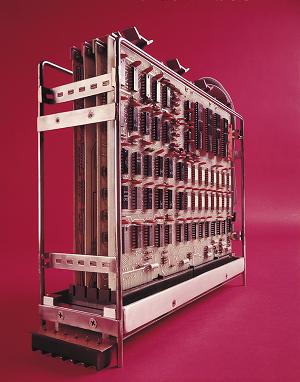 |
February:
LSI-11, DIGITAL's first 16-bit microcomputer, is introduced.
Directed toward OEM's and large volume end-users, whose applications required the computer to be buried inside the final applications product, the LSI-11 was a complete computing system (CPU, memory and I/O) on one board. |
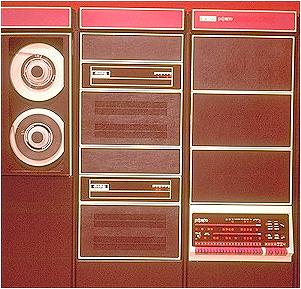 |
February:
The powerful PDP-11/70 is added to the PDP-11 family.
The PDP-11/70 represented the high end of PDP-11 architecture with the capacity for supporting the speed, addressing range and bandwidth required in large systems applications. It was the first PDP-11 to use cache memory. |
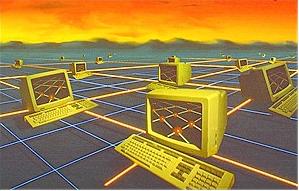 |
April:
Introduction of DIGITAL's Network Architecture (DECnet).
DECnet architecture evolved from one focused on the RSX family of operating systems to an architecture that encompasses large, open, distributed networks. Unlike competitors' network offerings, DECnet was not a terminal network but a true computer-to-computer capability for distributed computing systems. |
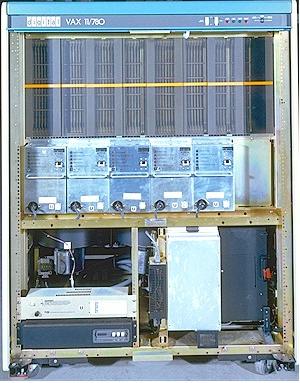 |
April:
The VAX architecture committee meets for the first time.
The VAX Architecture Committee began work on a computer with 32-bit architecture; the goal: to build a machine which was culturally compatible to the PDP-11 -- but with increased address space. The result: VAX, the "Virtual Address eXtension" of the PDP-11's 16-bit architecture to 32-bit architecture. The new computer required a new operating system so VMS, the "Virtual Memory System" was developed simultaneously. Shown here is an inside view of the first VAX model (the VAX-11/780). |
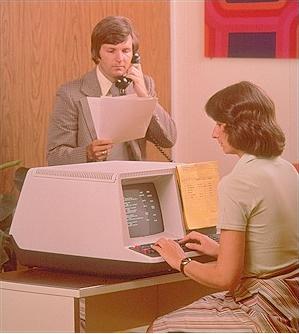 |
September:
The VT52, DIGITAL's first commercially produced video terminal is announced.
The VT52 was designed to sell into programming, time sharing and text editing applications. The terminal included a 19-key numeric cluster pad for data entry plus four cursor control keys and three unlabeled function keys which could be used by the customer to define special functions. |
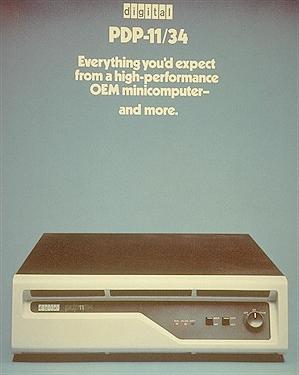 |
The PDP-11/34 is delivered.
The midrange PDP-11/34 was DIGITAL's most successful PDP-11 in terms of unit volume. The 11/34 featured a CPU so compact that the entire CPU logic was contained on two circuit boards. This provided greater flexiblity during later system expansion by making additional chassis space available. |



